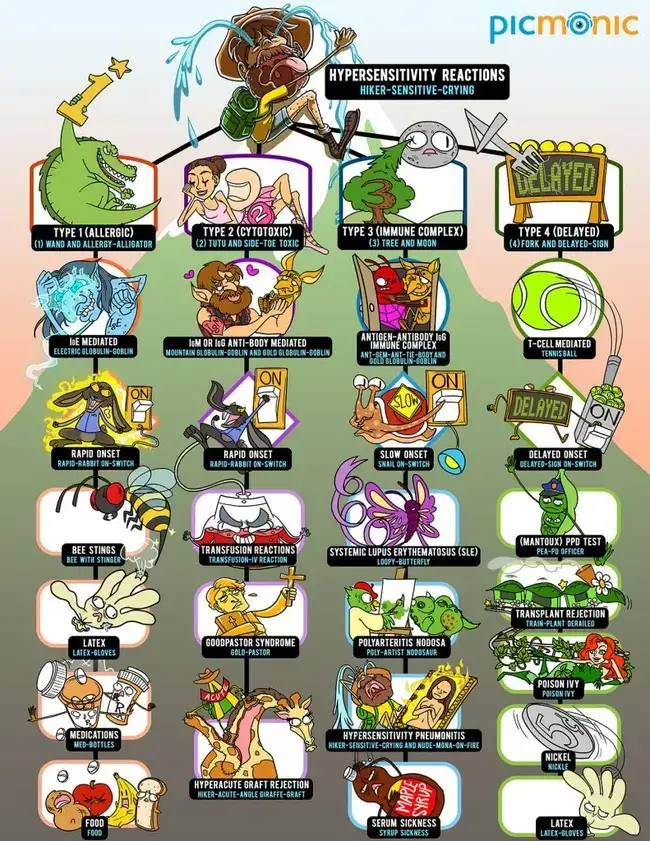Have you used Picmonic to study hypersensitivity reactions? Picmonic’s innovative approach to visual and mnemonic learning is transforming the study of hypersensitivity reactions by making it more engaging and memorable.
This infographic shows the different types of hypersensitivity reactions, their mechanism, timing, and causes.

What are Hypersensitivity Reactions?
Hypersensitivity reactions, also known as allergic reactions are exaggerated immune responses to substances that are usually harmless to most people. These reactions can occur in response to a range of allergens such as pollen, food, insect strings and more.
Types of Hypersensitivity Reactions
Hypersensitivity reactions are classified into 4 main types based on their underlying mechanisms.
Type 1 Hypersensitivity (Immediate Hypersensitivity)
This is the most common type of hypersensitivity reaction and involves the release of immunoglobulin E antibodies. it can lead to rapid, sometimes almost instantaneous allergic reactions such as hives, asthma. Examples include allergic reactions to food such as peanuts, bee stings or medications.
Type 2 Hypersensitivity (Cytotoxic Hypersensitivity)
In this type of hypersensitivity, the immune system mistakenly targets and destroys healthy host cells. It’s associated with autoimmune disorders and transfusion reactions such as hemolytic disease of the newborn.
Type 3 Hypersensitivity (Immune Complex-Mediated Hypersensitivity)
This reaction involves the formation of immune complexes composed of antigens and antibodies. These complexes can become deposited in tissues, leading to inflammation of tissue damage. Examples include systemic lupus erythematosus (SLE) and some forms of vasculitis.
Type 4 Hypersensitivity (Delayed Hypersensitivity)
Type 4 reactions are delayed and occur hours to days after exposure to allergens. They are characterized by the involvement of T cells and lead to inflammation and tissue damage. Examples include poison ivy and the tuberculin skin test.
Master and learn about hypersensitivity reactions by using Picmonic’s visual aids and mnemonics. It can be a great valuable resource for anyone trying to understand this complex topic.













